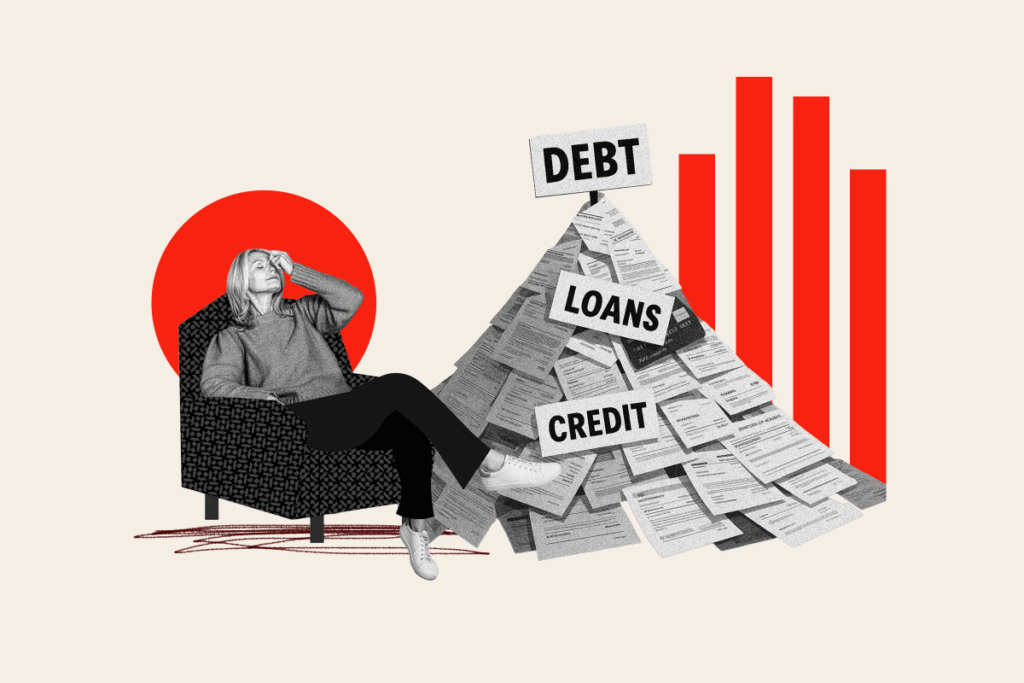Americans are defaulting on their debts at near-historic rates, a collision between long-term structural strains and more contemporary financial pressures that some believe could shake the entire economy.
The issue was put into sharp relief by the New York Fed’s most recent Household Debt and Credit report, which showed that household debt hit a record $18.6 trillion in the third quarter of 2025, having climbed $228 billion from the second quarter.
Credit card balances alone jumped $24 billion, reaching an all-time high, while the share of balances in serious delinquency—90 days past due—climbed to a nearly financial-crash level of 7.1 percent.
Auto loans tell a similar story, with serious delinquency rates at 3 percent, the highest since 2010. And a spike in resulting defaults has triggered a wave of repossessions in 2025, with 2.2 million vehicles already repossessed, per figures from the Recovery Database Network (RDN), and forecasts of a record 3 million by year’s end.
“Delinquencies, defaults, and repossessions have shot up in recent years and look alarmingly similar to trends that were apparent before the Great Recession,” the Consumer Federation of America said in a recent report.
Student loan delinquencies, often a precursor to broader consumer financial troubles, have accelerated at an unprecedented pace. Rates surged to 14.3 percent in the third quarter from only 0.8 percent in the fourth quarter of last year, a historic spike caused by the expiration of pandemic-era payment pauses. According to a separate analysis of Department of Education data by the American Enterprise Institute, 5.5 million student borrowers are in default on their loans, with another 3.7 million over 270 days delinquent.
Taken together, the numbers paint a picture of an American consumer in deep distress, and an economy that may be teetering on the edge of another collapse.
“I think all the debt figures pose a very significant threat to our economy,” said Ohio State economics professor Lucia Dunn. “Probably any policy to deal with this may just be kicking the can down the road.”
Economist Domonkos F. Vamossy called the recent increases “historic” and “highly unusual.”
“Many are prime borrowers with high credit scores and no prior history of default,” he told Newsweek, and observed the surprising transition of auto loans from being considered among the safest credit products to now being seen as the riskiest.
Vamossy diagnosed the primary cause as the “massive inflation” seen in the post-COVID period from which the country has never fully escaped, as well as “high interest rates eroding household budgets.” Add to this a cooling labor market that has hit younger Americans and recent graduates especially hard, with hiring muted and layoffs beginning to chip away at overall employment.
And beyond the personal financial stresses this creates, rising levels of debt, delinquency and default could limit economic growth as constrained consumers cut back on spending.
“More delinquent student loans will dampen credit demand and consumption, especially among Gen Z, Millennial and Gen X borrowers,” writes KPGM. “That is contributing to the stress in the housing sector where the age of the average first-time buyer is climbing.”
Some economists are less pessimistic about borrowing in 2025. Consumer debt expert and economics professor Florian Exler notes the encouragingly low write-off rate—lender losses due to defaults on loans considered effectively uncollectible and stricken from balance sheets.
“Write-off rates do not look unusually high by historical standards. In fact, credit card write-offs have started to decline again,” he told Newsweek. “It’s also worth remembering that during COVID, delinquencies and write-offs were exceptionally low due to fiscal transfers, moratoria, and depressed consumption—so part of what we have seen is a normalization.”
However, Vamossy considers the trend “deeply concerning” and one which signals “a potential long-term structural issue rather than a temporary blip.” Credit markets, he noted, are already adapting to rising rates of delinquency and default, with lenders “tightening standards and reducing originations.”
“We face a supply-side crisis in housing that 40- or 50-year mortgages cannot fix,” he said. “My worry is less about a sudden ‘Great Recession’ style crash and more about a slow, grinding deterioration of financial health that impacts fertility rates, homeownership age, and stability.”
Read the full article here
